Another set of photos of the Oostendorper watermill near Haaksbergen, The Netherlands I posted about earlier, this one:
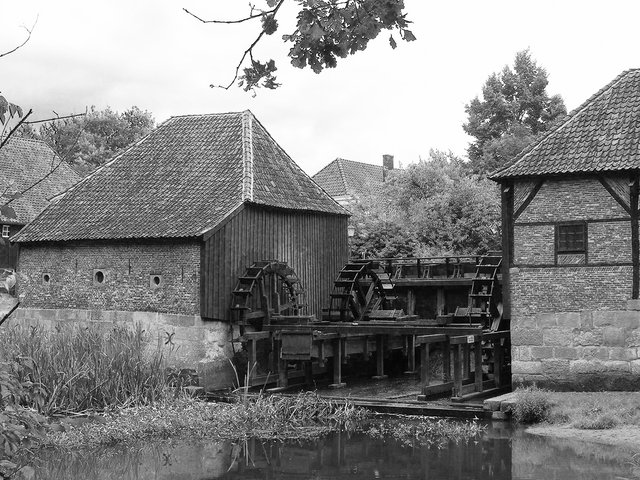
Olympus Stylus 1s, 55mm, ISO400, f8, 1/80s, one television aerial edited out
I went back to try and get some shots of the inner workings of this water mill, but I only managed one as there were too many people inside. First, a shot from a different angle:
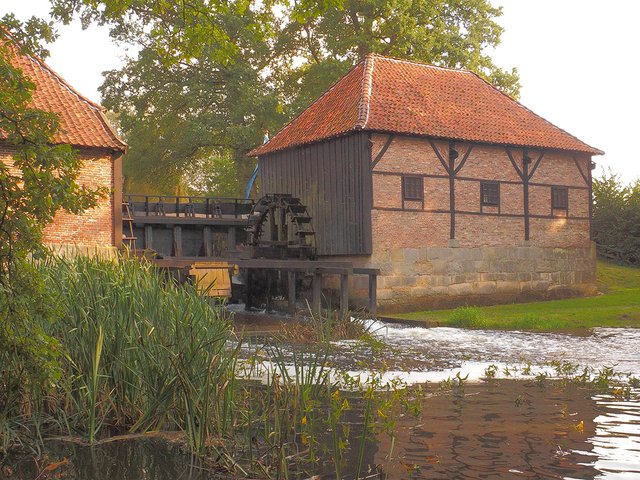
Olympus Stylus 1s, 47mm, ISO400, f8, 1/160s
Only one of the water wheels was turning, powering the oil mill:
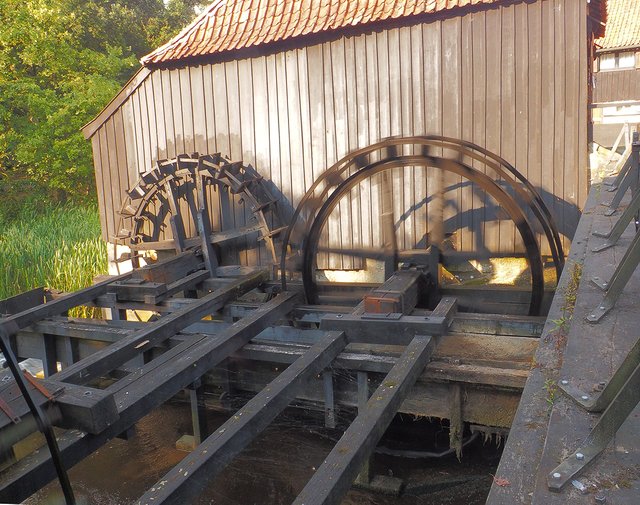
Olympus Stylus 1s, 28mm, ISO400, f8, 1/10s
The shaft of the water mill goes into one end of a reduction gearbox, you can see the gearbox' outgoing shafts entering the photo below on the right:
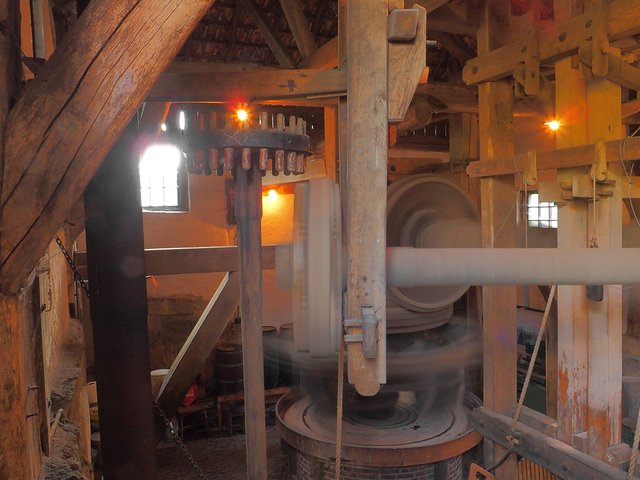
Olympus Stylus 1s, 28mm, ISO400, f8, 2.5s
The shaft in the back drives a vertical cog wheel, which drives a horizontal cogwheel with two vertical, small milling stones attached to it. These milling stones roll over a vertical larger milling stone you see at the bottom. The linseed or rapeseed is crushed between them into a oily pulp, which is then processed in the next stage.
The pulp is put into a hollowed wooden block with a wedge on top and a small hole in the bottom. A vertical battering ram is used to squeeze the oil out. Here's a picture of the battering rams:
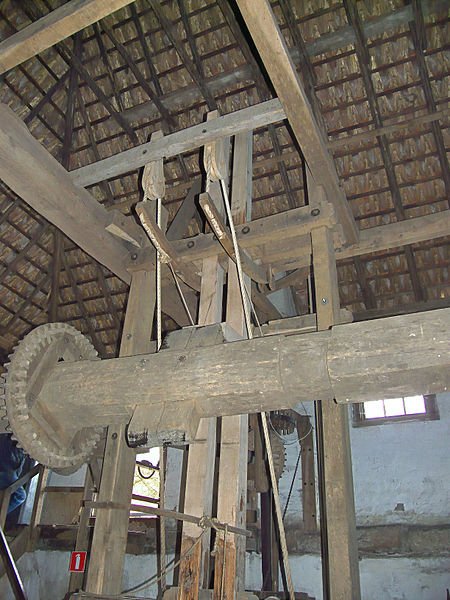
Photo by Rasbak, from WikiMedia Commons under a CC BY-SA 3.0 licence
The bits sticking out of the axle lift and then drop the battering rams on top of the wedge.
This post has been ranked within the top 80 most undervalued posts in the second half of Nov 16. We estimate that this post is undervalued by $5.04 as compared to a scenario in which every voter had an equal say.
See the full rankings and details in The Daily Tribune: Nov 16 - Part II. You can also read about some of our methodology, data analysis and technical details in our initial post.
If you are the author and would prefer not to receive these comments, simply reply "Stop" to this comment.
Downvoting a post can decrease pending rewards and make it less visible. Common reasons:
Submit
👍 first time, I saw that. very unique.
Downvoting a post can decrease pending rewards and make it less visible. Common reasons:
Submit
And very loud!
Downvoting a post can decrease pending rewards and make it less visible. Common reasons:
Submit
great post. I love water mills.
Downvoting a post can decrease pending rewards and make it less visible. Common reasons:
Submit
Thanks!
Downvoting a post can decrease pending rewards and make it less visible. Common reasons:
Submit
Every house or village should go back to the past and build one of these, not dams like is happening in Brazil, that destroy the rivers and the population that lives on it. This is a serious revolution! Good job! (;
Downvoting a post can decrease pending rewards and make it less visible. Common reasons:
Submit
Some of the watermills here have been converted to deliver electrical power, but not nearly as much as a huge dam with generators, of course.
Downvoting a post can decrease pending rewards and make it less visible. Common reasons:
Submit
Great photos. There is so much ingenuity in old mills. I wonder how much maintenance those systems take. It looks like they have held up to the elements well. Or people are doing a great job of maintaining all that infrastructure.
Downvoting a post can decrease pending rewards and make it less visible. Common reasons:
Submit
Maintenance is not too bad, I heard, except the water wheels and milling stones. The wooden innards last a long time, and bits are easy to replace.
Downvoting a post can decrease pending rewards and make it less visible. Common reasons:
Submit
Thanks for sharing. I cycled past there in September - too bad I did not know how close I was. How close was I?
Downvoting a post can decrease pending rewards and make it less visible. Common reasons:
Submit
No more than 200m, I would say. The mill is at (52.136111, 6.730556).
Downvoting a post can decrease pending rewards and make it less visible. Common reasons:
Submit
We have an old Aussie expression. "Bugger"
I did get to see the working sawmill in Ruurlo later that same day - my photos and video will emerge here soon.
Downvoting a post can decrease pending rewards and make it less visible. Common reasons:
Submit